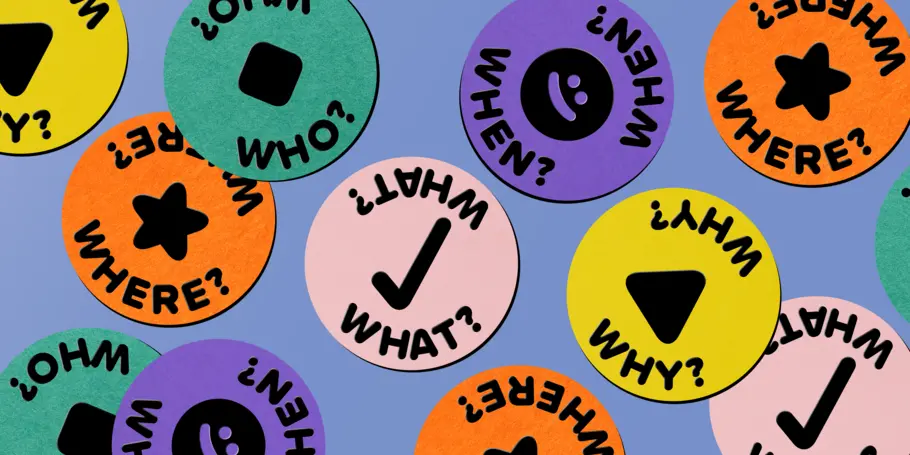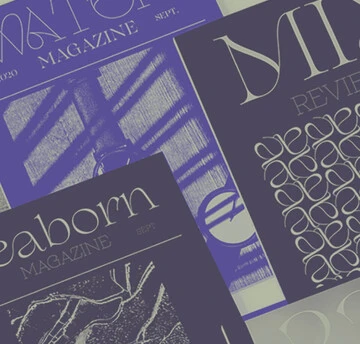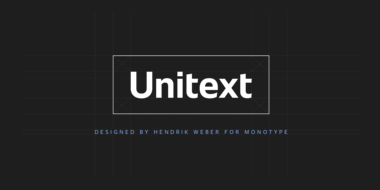Gauge your clients’ font needs with these 12 questions.

You wouldn’t prepare a dinner party without knowing what ingredients there were in your kitchen, or how many guests were arriving, would you? You could, but you would be taking a risk. What if you don’t have a certain ingredient? What if you run out of soup?
Similarly, it can be tempting for teams to jump right into brand work, but strategists know better. Understanding a brand on a practical level is key. Knowing what ingredients are in the kitchen, estimating the number of guests, (the type of audience), and having an idea of the overall themes your brand should portray will usher your agency into creative flow. No one wants to be throwing spaghetti on the wall.
As an agency (in-house teams included), it’s important for your creative, design, and project management teams to have a strong idea of what your client needs are (as you would in general), even when they don’t know it themselves. Fonts are an integral part of that. And every client has different needs.
Here are 12 questions you can ask your clients during on boarding so that you can have a stronger idea of their font usage. These will not only help your design team know what to expect in the long run, but it also makes you a pro. Let’s get into it.
Questions 1-2: Brand image.
1. What kind of image is your brand trying to project?
2. What are you trying to communicate with your brand?
These types of overarching questions are meant to identify what makes a brand a brand. How do they communicate? How do they want to be perceived?
It’s worth knowing that this kind of deep dive into brand identity can be a series of conversations, and doesn’t happen overnight. It takes time to delve into the soul of a brand, but doing so can yield creative genius: That’s why we’re in the branding business in the first place.

Questions 3-7: Brass tacks.
3. What fonts are used in your branding system at the moment?
4. How do you ensure you have your font library updated? Do you have the correct license for all touch points (web, app, social, print) in all countries?
5. How will you distribute and ensure all vendors and agencies are using the correct font files?
6. Does your in-house marketing team have access to fonts?
7. Does your brand use apps, additional websites, microsites, or seasonal promotions, and what are the views across those channels?
Pinning down the answers to some of these practical questions is a substantial undertaking, but a worthwhile one. It might take some poking and prodding to learn exactly how a brand’s internal teams use fonts, where they are stored, who gets access, and how and when fonts are updated. However, you consider these questions an essential part of understanding the brand you’re working with, so you can better tackle their business and creative challenges.
Question 8: Analytics.
8. How many web views does your website get? (Not just unique views. Total views are what is important here. If your brand uses apps, microsites, and other forms of media, views should be taken into account there, too.
These kinds of analytics questions are important to help determine the appropriate license for the brand you’re working on. And this doesn’t stop at website views. Any apps, associated websites, microsites, and digital mediums all count. Estimating what the brand plans to do in the future can also be useful.
Questions 9-11: Global appeal.
9. What countries do you work in?
10. How many countries do you expect to use fonts in?
11. How many other agencies worldwide do you work with that would need to know your fonts?
Another vital set of questions for licensing purposes, and language purposes, too. Finding the right typeface that can complement a brand in another country is important to keep a cohesive world image. The opposite can have a negative impact. Also, knowing whether a brand has access to the complete typeface character sets, say, for the languages your brand needs, is another point worth finding out.
Question 12: Onboarding.
12. How easy is it to onboard new designers and get them the right fonts?
If onboarding new employees and designers is a cause for inefficiency, then something needs to change. No designer wants to see a missing font error: it slows all the work down, and has agency-wide implications, as well as implications for delivering to the client on time.
The cherry on top.
Figuring out client font needs is a daunting but worthwhile task. After all, brands might not have any idea how their fonts are managed, or they might have a system that could use some improvement or clarification across teams. Investing time in this process not only helps you and your client understand the goals and objectives of your project, but builds trust and dialogue that will become the foundation of a solid working relationship.
Agencies have an opportunity to shine here. Helping brands reach consistency and a better understanding of how they use their fonts can help them be more efficient in the future. Kind of like an organized pantry, a labeled spice rack, or knowing the guest list can help a cook better prepare a meal for a dinner party while keeping guests satisfied.
We can say cheers to that!














